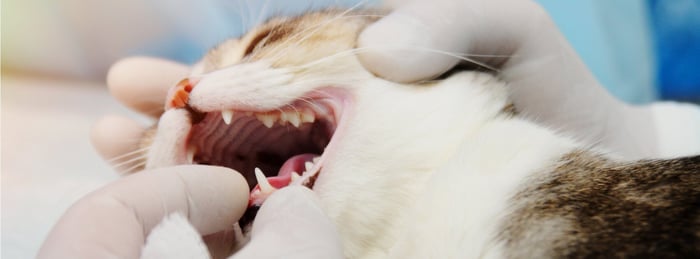What Is Pet Joint Pain? Pet joint pain, as the name implies, is pain and disability that a dog or cat has in their joints. This type of pain can be caused by developmental problems or degenerative problems.
In some cases, it is caused by an injury or a serious illness, such as cancer.
It is important to understand what might be causing your pet’s pain, common signs and symptoms to look for, and how pet joint pain can affect your four-legged friend in both the short term and long term.
What Are the Most Common Joint Problems in Pets?
Joint problems in pets can be either developmental, meaning the joint did not develop correctly, or degenerative, which means that the structure is degenerating over time either due to illness or the aging process.
- For both cats and dogs, the most common degenerative joint problem is arthritis. The ligaments or cartilage surrounding the bones wears away over time, and the bones can grind against each other, causing pain, swelling, and stiffness.
- In dogs, hip dysplasia or elbow dysplasia can cause joint pain. Dysplastic joints did not form properly and can be made worse if the dog is overweight, extremely active as a young puppy, or walked as a young puppy on concrete or similar surfaces.
- Cats can also suffer from hip dysplasia and they can also displace their kneecaps, which causes pain.
- Both cats and dogs can injure their limbs. They can get them caught in small spaces and twist their joints in their panic to free themselves. While cats usually land on their feet, both felines and canines can get hurt jumping down from high surfaces.
- Finally, bone cancer and metastasized cancers can affect the joints, causing pain and disability.
What Are the Signs and Symptoms of Pet Joint Pain?

There are some similarities and differences in the ways that cats and dogs show that they are in pain. While both species can be stoic, cats usually hide their pain better than dogs.
To determine if your own four-legged friend is suffering from pet joint pain, run through the following checklist of signs and symptoms and cross off those that apply.
< > Your pet is moving stiffly and looking for softer surfaces to sleep on
Both cats and dogs might be stiff when they get up if they are having pet joint pain. They also might seek out soft places to sleep more than they usually do.
If your cat often sleeps on a wide windowsill and your dog stretches out on the wood floor, they might gravitate toward blankets, pillows, soft furniture, and carpeted areas instead if they are feeling sore.
< > Your pet is limping or avoiding physical activity
Both cats and dogs might limp or avoid extra activity if their joints hurt. Limited activity can be hard to notice because as your pet ages, he or she will naturally not have the energy that they did as a puppy or kitten.
< > Your dog cries out, growls, or flinches when a painful area is touched
Dogs might yelp or cry when they move in a way that hurts their joints. They will also tend to lick or chew at the area and flinch if you touch it.
Sometimes, even a sweet-natured dog will growl or snap at their owner, so be cautious touching your dog in the area where you suspect the pain is.
< > Your cat hides in small areas and begins eliminating outside the litter box
Cats will usually not cry out unless they are in severe pain. They might hide in small spaces more often and not come out when you call them or shake their food container.
They also might not eat as well or might eliminate outside of their litter box if it is painful for them to climb into the box. All of these are signs that your veterinarian should evaluate.
Why Is Being Mindful of Your Pet’s Joint Health Important?
Your pet’s overall health and quality of life depend on you being mindful of his or her joint health. A dog who has pain each time he stands up or a cat who can’t jump off of the bed without pain in her knees is not living the best quality of life possible.
By knowing that your furry friend is suffering from pain, you can talk to your veterinarian about any lifestyle, supplemental, and medical treatment options that can help. Your cat will scale miles of furniture in her lifetime, and your dog might jog, run, walk, or pace thousands of miles in his.
When every step is painful, this affects your pet’s physical and mental health. In addition, some causes of joint pain are serious and need to be treated to prevent further problems.
A pet with cancer that has spread to a joint, for example, needs prompt treatment or, at minimum, palliative care to prevent further severe pain.
An animal with hip dysplasia can benefit from a tailored diet and exercise plan to prevent further disability. Talk to your veterinarian about your concerns regarding your pet’s joint health at your next visit.
If your dog or cat is showing signs of pet joint pain and their activity is limited or restricted, contact your veterinarian for an appointment as soon as possible.









